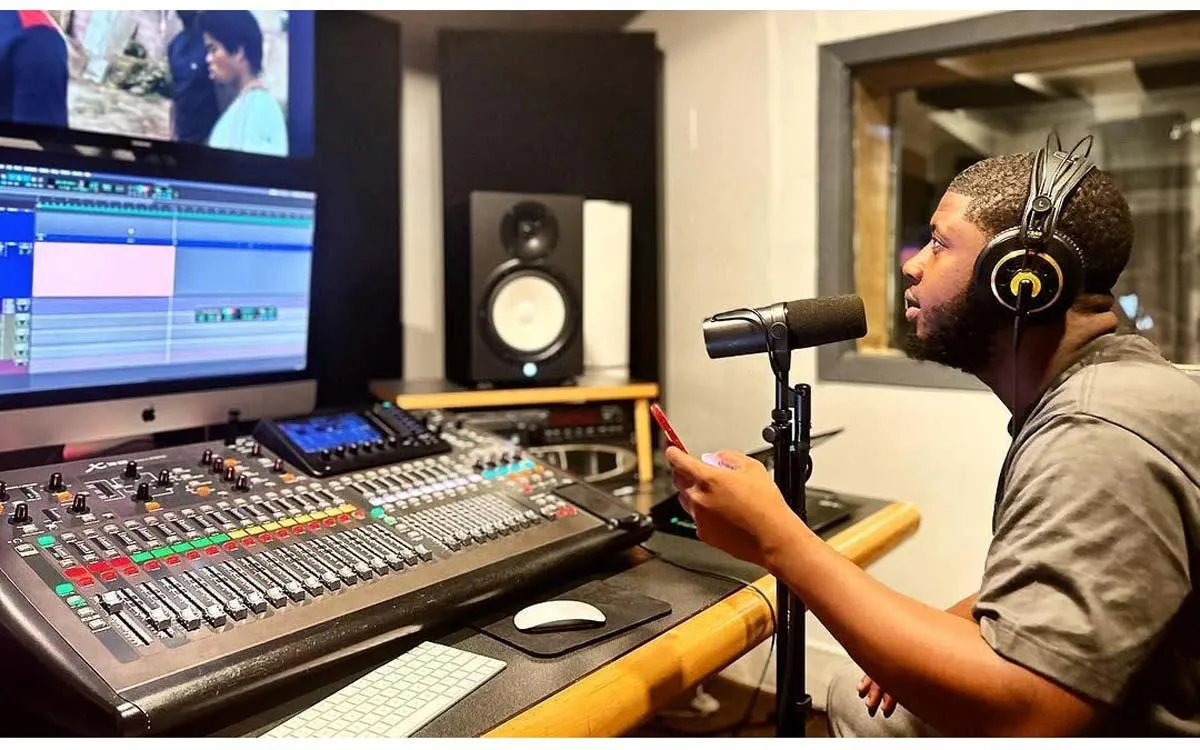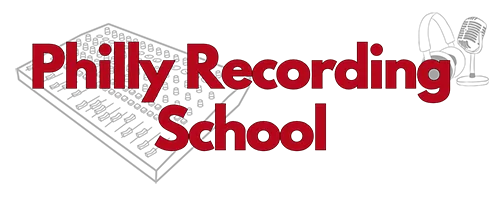Philly Recording School Blog
25 Years of Excellence
The Essential Skills Every Audio Engineer Should Learn
by illiad | Feb 10, 2025

Becoming a skilled Audio Engineer requires mastering a diverse set of technical and creative abilities. These skills form the foundation of the Audio Engineering profession, allowing engineers to produce high-quality recordings, mixes, and masters across a range of mediums, from music to film. Whether you’re looking to break into the industry or refine your expertise, understanding and practicing these essential skills is crucial.
At Philly Recording School, we teach students the tools, techniques, and practical knowledge needed to succeed in the competitive field of audio engineering. Here's a breakdown of the core skills that every audio engineer should learn, and how our curriculum is designed to help you master them.
Signal Flow
Signal flow is the path that audio signals take from their source—such as a microphone or instrument—through various equipment and software, until they are recorded or played back. Understanding this path is essential for troubleshooting, ensuring optimal recording quality, and effectively managing complex setups.
Without a clear understanding of signal flow, identifying issues like unwanted noise, distortion, or signal loss becomes challenging. A solid grasp of signal flow enables audio engineers to maintain high-quality recordings and mixes.
At Philly Recording School, we begin by teaching the fundamentals of signal flow in both analog and digital environments. Our hands-on approach allows students to work with real-world gear and Digital Audio Workstations (DAWs), reinforcing the importance of understanding each component’s role in the audio path. We guide students in setting up and routing signals through mixers, microphones, audio interfaces, and more.
Tip for beginners:
Start by learning the basic components of signal flow, such as microphones, audio interfaces, and mixers. Focus on understanding how each piece connects to the others and the role it plays in the audio signal’s journey.
Mixing
Mixing is the process of blending multiple audio tracks into a cohesive piece of music or sound design. This involves adjusting volume levels, panning tracks, adding effects like reverb or compression, and ensuring clarity and balance among all elements.
A well-mixed track sounds polished and professional, while a poorly mixed track can feel disjointed or muddy. Mixing is where creativity and technical skills intersect, making it a critical step in audio production.
Our curriculum covers both the creative and technical aspects of mixing, starting with foundational techniques such as EQ and balance. We provide students with access to professional-grade equipment and teach them to work in various environments, from live sound to studio mixing. We focus on teaching students to listen critically and make decisions based on the overall feel of the track.
Tip for beginners:
Start with balancing levels. Don’t worry about complex effects until you’ve mastered the basics. Focus on clarity and separation of the instruments.
Mastering
Mastering is the final step in audio production, preparing and optimizing the mix for distribution across various formats like streaming, CDs, or vinyl. This process includes adjusting overall EQ, compression, and limiting to ensure the track sounds consistent on all playback systems.
Mastering ensures that a track or album sounds polished, consistent, and ready for release. It’s essential for making sure your project translates well across different listening devices and formats.
In our Audio Engineering Program, students learn advanced techniques to finalize a mix. We cover both technical and artistic aspects, emphasizing the importance of reference tracks and maintaining consistency across an album. Students gain hands-on experience in mastering using both software and hardware, ensuring they are well-versed in industry-standard practices.
Tip for Beginners:
While mastering might seem daunting, focus on the mix first. Ensure the track sounds great before you begin mastering. Good mastering starts with a great mix!
Digital Audio Workstations (DAWs)
A Digital Audio Workstation (DAW) is software used for recording, editing, mixing, and producing audio. Popular DAWs include Pro Tools, Logic Pro, Ableton Live, and FL Studio.
The DAW serves as the central hub for audio production. Proficiency with a DAW enables efficient recording, editing, and manipulation of sound. Familiarity with various DAWs is essential for adapting to diverse professional environments.
We offer comprehensive training in multiple DAWs, focusing on workflow optimization and advanced production techniques. Students learn to utilize each software's powerful features to streamline their creative process. We emphasize mastering keyboard shortcuts, MIDI integration, audio editing, and plugin management to enhance efficiency and versatility.
Tip for Beginners:
Begin with one DAW to become comfortable with its basic features. Once proficient, transitioning to others becomes easier. Regular practice and utilizing tutorials are key to mastering your chosen DAW.
Microphone Techniques
Microphone techniques involve selecting and positioning microphones to effectively capture sound. Different microphones and placement strategies are suited for various applications, such as recording vocals, drums, or acoustic instruments.
Choosing the right microphone and placement significantly impacts sound quality. An engineer's ability to select and position microphones properly is essential for capturing the best possible sound.
Our students work with a wide range of microphones and learn various placement techniques for different recording situations. We teach proper mic placement for instruments, vocals, and ensembles to ensure a clean and accurate sound. Students also learn the differences between condenser, dynamic, and ribbon microphones, and when to use each type.
Tip for Beginners:
Start by experimenting with different mic placements on simple sources like a guitar or voice. Try adjusting the distance and angle to hear how it changes the tone and character.
Problem-Solving and Troubleshooting
Problem-solving involves identifying and resolving issues that arise during recording, mixing, or mastering. Whether it's a technical malfunction or a mix that isn't coming together, troubleshooting is a vital skill for every engineer.
Challenges are inevitable in the engineering process. The ability to quickly identify and resolve issues ensures a smooth workflow and prevents delays.
At Philly Recording School, students learn to diagnose common technical issues, from poor signal quality to software crashes. We emphasize a systematic approach to troubleshooting, enabling students to remain calm and efficient under pressure.
Tip for Beginners:
Start by familiarizing yourself with common issues in your recording environment, such as feedback, grounding problems, or improper mic placement. Understanding how to address these will save time and reduce frustration later.
The Philly Recording School
@ Lil' Drummaboy Recordings
818 South Street, Philadelphia, PA 19147
Tel: (215) 574-1400

